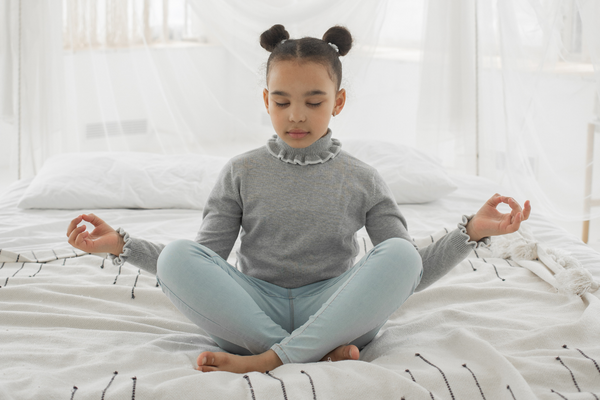
Now more than ever, our kids are struggling to maintain a healthy mindset. Outside stressors can cause them to feel sadness, anger, or even self-doubt. As adults, we’ve developed skills to help us cope. But for our kids, they need a little help to learn how to deal with those big feelings.
You may be wondering how you can help your child eliminate those negative thoughts. Look no further. We’re here with tips on how to help your child develop a positive mindset, as well as 5 positivity activities for kids that are sure to give them a boost!
How to Develop a Positive Mindset In Your Kids
It’s easy for adults to dwell on the negative rather than the positive, and even more so for our kids. This negativity is typically due to feelings of shame, doubt, and fear, and those feelings cause our brains to produce stress chemicals.
So where do you start when it comes to helping your child develop a positive mindset? First, you need to help your child understand that all their emotions, both the positive and negative, are OK. We need our emotions because they are essential to how we view and process the world around us.
The goal is to not make “thinking positive” feel like a burden. Instead, we need to explain to our kids that the emotions they feel are healthy, and they don’t have to feel happy all the time.
We can do this by allowing our kids to feel and process the negative emotions, while providing opportunities for them to develop more positive thinking and affirmations. The best way to do that is by giving them mental exercises that will over time rewire their brain to respond to those negative emotions in a healthier way.
Take a look at the 5 positivity activities for kids below to help you get started.
5 Positivity Activities for Kids
As parents, we have the power to help our kids develop and maintain a more positive outlook. These 5 positivity activities for kids will help change the way they see themselves and the world around them.
Mediation
Meditation can help your child gain a more positive mindset. The goal is to focus on compassion and kindness. Start by having them sit quietly and focus on sending positive thoughts to loved ones. Four traditional phrases that are used in this form of meditation are: May you feel happy, may you feel safe, may you feel healthy, and may you live with ease. The feelings behind the words are more important than the words themselves. After a couple of weeks, they can begin sending positive thoughts to other people they know. The practice itself will help to condition their brain to think in a more positive way, resulting in feeling more connected to others and practicing more positive social behaviors.
Positive Affirmations
Most of us are probably already familiar with affirmations, which are positive statements we say to help reduce negativity and increase positive thinking. This activity can be really fun for your child, as they have the opportunity to think of their own positive affirmations to use. Affirmations have the power to heal through first saying them and then internalizing them. By internalizing them, your child will be able to take ownership and commit themselves to their affirmations. The goal is to use phrases that are not only positive, but are short and in the present tense, such as, “I am kind”, “I am unique”, and “I am a good friend”.
RELATED: 100+ Positive Affirmations for Kids
Helping Others
By encouraging your child to help others, you’re putting them on a path towards more positive feelings and behavior. The more kind acts they participate in, the happier they become. This is because helping others can provide inner peace as well as gratitude. Your child can start at home by helping parents or siblings around the house. From there, they can help neighbors with chores or yard work, volunteer to help at a family gathering, or participate in efforts to gather food or clothing for a local charity. Helping others will provide your child with a greater sense of well-being and allow them to feel better about themselves.
Sharing Positivity
When you share positivity with your child, you are allowing your child to see a positive attitude in action. You are also creating a shared experience where they can feel your positive emotions. They will learn from you how to handle their emotions in a positive way. This can be as simple as laughing together about a joke or funny TV show. Physical affection is also a great way to spark feelings of contentment and joy. Over time, you create a deeper connection with your child through these positive experiences, as well as a stronger foundation for physical and emotional well-being.
Recognizing the Positive
Writing things down helps to cement ideas and thoughts into our brain. So it makes sense that by writing down things that make us feel positive, happy, and inspired, we will be able to think more positively about the world around us. Give your child a notebook or journal and ask them to write down things in their day that make them feel happy or that they found beautiful. It can be the smell of cookies baking in the oven, a kind thing someone did for someone else, or the way the sky looks after a storm. The idea is to write down things they see, hear, touch, or smell that they find beautiful or give them a feeling of joy. You’ll discover that by doing this regularly, your child will start finding beauty and joy in everything around them.
By practicing these 5 positivity activities for kids, your child will be on their way to a more positive outlook about themselves and the world that they live in.














































